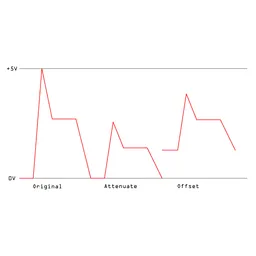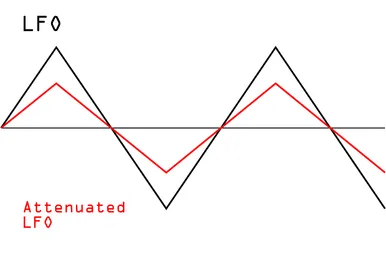Sometimes, I wish everything had a fine-tune knob. But since this is modular, we can just patch our own!
I’m a very methodical patcher, and I often like to make adjustments to parameters, or to the amount of CV going to a particular destination. But I also want to set it up so that I can easily and repeatedly make tiny adjustments that may be very small. Making accurate, precise changes by hand can be a challenge, and I started thinking about ways that I could add some fine control to sensitive parameters. Especially when dealing with things like pitch modulation, our ears are very sensitive to things being even the slightest bit off. Today, we’ll go over a few simple but extremely useful techniques for dialing in your patch to perfection.
The double attenuator
This one’s a classic: run a signal like an LFO into an attenuator, then run that signal into another attenuator. This allows you to attenuate a signal with the first attenuator, then fine-tune that signal to the exact range you need with more precision on the second attenuator. It’s incredibly simple, but in some situations it’s invaluable.

Again, this sort of thing is extremely helpful when dealing with pitch. Let’s say we have an LFO and we want it to sweep exactly one octave of an oscillator. Dialing that in on a single attenuator can be difficult, but it becomes a lot easier with a second one in series.
Offset to attenuated CV
I started using this patch quite a bit recently when I was pinging filters. Filters generally don’t have frequency fine-tune knobs, so I used this technique to work around that and get things perfectly in tune.
Quant Gemi is an octave switch, but it can also be a simple 1v or 2v offset source. By patching a small offset like this to an attenuator, and then to a CV input on another module, we can finely adjust a parameter with the attenuator.

This is even easier to do if a module has an attenuated CV input, as you can just patch the offset directly into a module and the attenuator becomes a fine-tune knob.
Limitations are helpful
I often use step sequencers to modulate parameters in my patches, and limiting the range of a sequencer can help make programming a lot easier. For instance, I often use a Mimetic Digitalis to change the sound of a Basimilus Iteritas Alter. I’ll set a parameter on the BIA to the minimum I want for that patch, then run an output of MD through an attenuator and into the CV input for that parameter.
By setting a step on MD to maximum, I can adjust the attenuator to the maximum value I’ll want that parameter to hit. This lets me program a sequence using the full range of the sequencer, but the BIA’s parameters will always be within the smaller range I’ve selected.
Do you have other tricks for adding precision to your patches? We want to hear about them! Tag us on Instagram and use the hashtag #blogpatch to share them with the community.






